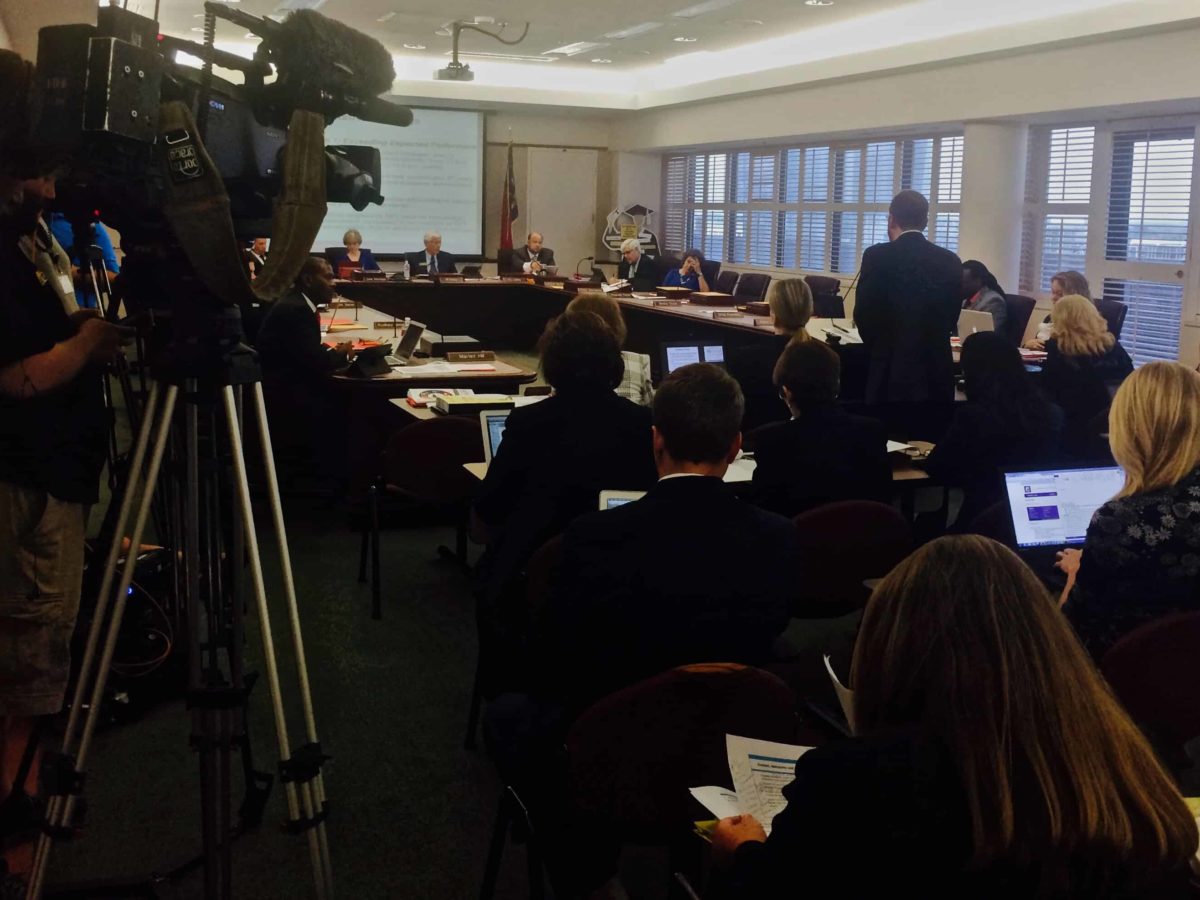

The State Board of Education heard a presentation summarizing the impact of Race to the Top at its Wednesday meeting, and the news was mostly good.
North Carolina received one of 12 competitive grants from Race to the Top in 2010, gaining almost $400 million in the process, according to the North Carolina Public Schools website. That money is now at its end.
In evaluating the success of the money in moving education along in the state, Dr. Trip Stallings, director of policy research at the Friday Institute for Educational Innovation, started off his presentation to the Board with an overview of his findings.
“I’ll get straight to the punchline,” he said. “The news is pretty good.”
One of the biggest successes was in graduation rates during the initiative. As reported yesterday, the state’s graduation rate is at its highest ever: 85.4 percent. But an even more critical point, Stallings said, is that the state narrowed its graduation achievement gap in that time. Between white and minority students, the gap went from 13.9 percentage points to 7.
“That for me is the much more important point to note,” Stallings said.
Teacher effectiveness remained mostly unchanged during Race to the Top, but Stallings said that given the changes in curriculum — associated with the move to Common Core — during that time, this is actually a good finding.
During Race to the Top there were also declines in student achievement, but Stallings said that wasn’t too surprising, also because of the introduction of Common Core.
“When we make those changes, we often start with a dip before we rebound,” he said.
Stallings noted that in many states with Race to the Top initiatives, those states ended up performing similarly to non Race to the Top participants. But North Carolina showed unexpected progress in that regard.
“When you look at North Carolina…we notice that there are some gains that North Carolina made that were greater than other states,” he said.
NAEP reading scores, 8th grade math, SAT math, and graduation rates were a few of the areas where North Carolina excelled. He did note that some areas did decline in relation to other states, however — SAT reading and writing, and AP exam-taking.
Stallings also pointed out that the implementation of Race to the Top was successful from a structural standpoint.
Of the 11 initiatives the state undertook, nine started on time, and all 11 were up and running after 1 1/2 years. Eight out of 11 of the initiatives were implemented to scale, which means they reached the educators and students they were supposed to reach.
As noted in a presentation last month, the Race to the Top funds used on school turnaround efforts were also successful.
The efforts focused on a mix of 118 of the lowest performing elementary, middle, and high schools, and Gary Henry from Vanderbilt University, who presented the findings last month, said that 2,156 students are proficient who wouldn’t have been otherwise.
Superintendent June Atkinson said yesterday during a press conference on the school performance grades that now that Race to the Top is ending, the state’s turnaround department is about half what it was, though she added that staff learned a lot about how to do effective turnaround during the initiative.
Henry announced a partnership at Thursday’s Board meeting that could perhaps help further with turnaround efforts. The partnership would be between the State Board, DPI, Vanderbilt University, and the Rand Corporation, and would allow for continued evaluation of turnaround efforts to help improve the information the state receives about its effectiveness. This would include a teacher and principal advisory panel to interpret findings, information on implementation and outcomes, and increased ability of the State Board for oversight, among other measures.
Henry is still waiting to hear if the partnership will be awarded the $5 million it needs for its 5-year effort going forward, but he seemed confident.
One of the final pieces of Race to the Top that Stallings discussed Wednesday was sustainability.
“We all knew when Race to the Top started that at some point the money would go away,” he said. “What has been left behind?”
He said that it doesn’t look likely that the gains achieved under the initiative are going to disappear.
He noted that nine of the 11 initiatives funded by Race to the Top had at least three out of four sustainability characteristics that help determine their ability to continue. These include things like does the initiative have a home, a structure, experienced personnel, and ongoing demand?
He also said that five of the initiatives reached all of their short term, intermediate, and long term outcomes measurable to date. Four other initiatives met some of their outcomes.


